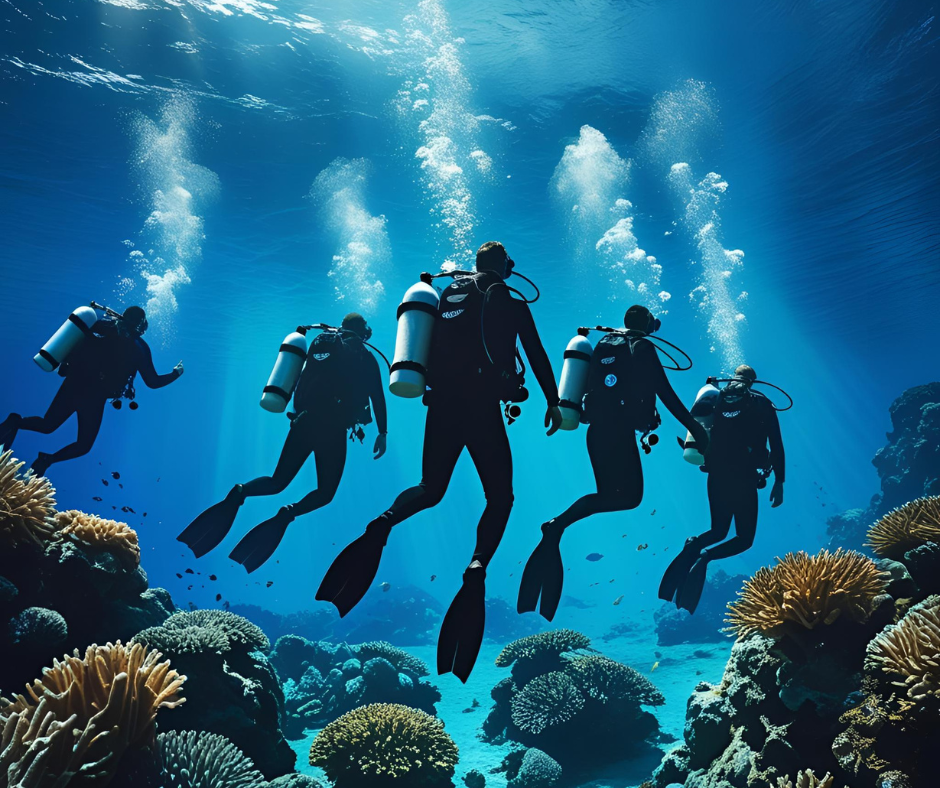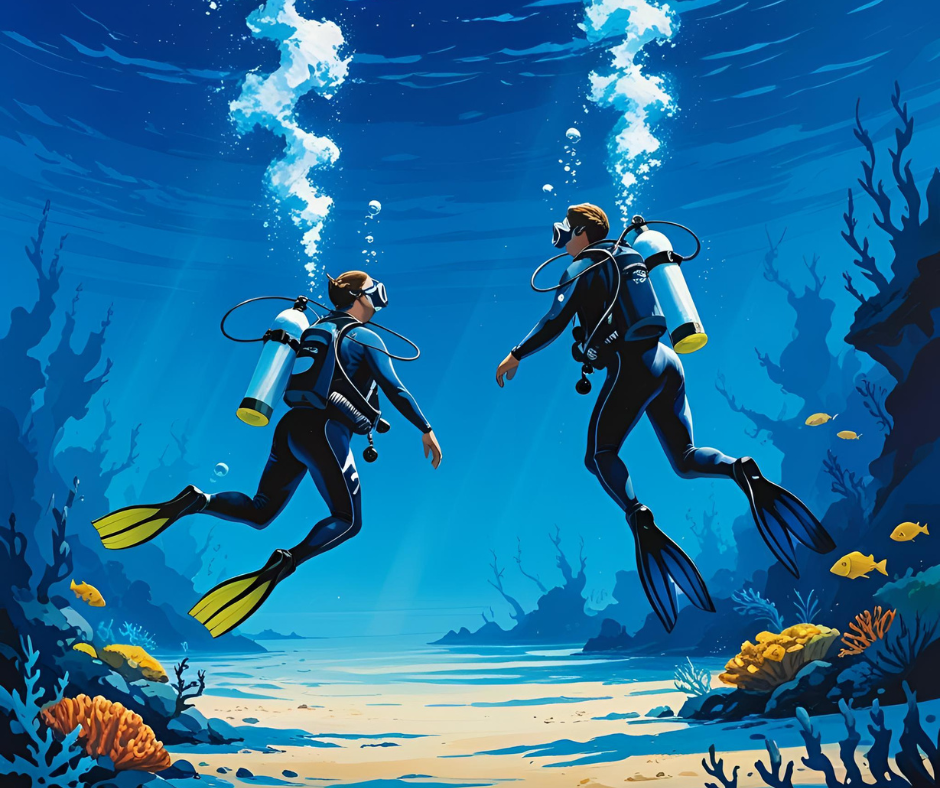Diving is more than just a recreational pursuit—it’s an immersion into a silent, weightless world filled with extraordinary sights and sensations. However, with this adventure comes the responsibility to understand the physiological effects that depth and pressure can have on the human body. One such phenomenon is nitrogen narcosis, a condition that affects divers at depth and can impair judgment, coordination, and safety. Despite its transient nature, the risks it poses are real. By delving deeper into its causes, symptoms, and methods of prevention, divers can equip themselves with the knowledge needed to make informed decisions while diving.
What Exactly Is Nitrogen Narcosis?
Nitrogen narcosis is a condition brought on by increased partial pressures of nitrogen gas when a diver descends beyond 30 meters. At these depths, the inert nitrogen gas present in compressed air begins to exert a narcotic effect on the central nervous system. This results in symptoms that mimic those of alcohol intoxication—confusion, impaired decision-making, and euphoria. Although nitrogen is normally harmless at the surface, when under pressure, it dissolves more readily into the blood and tissues, influencing how nerve cells communicate. The effects are not permanent and typically dissipate upon ascending to shallower depths, but this doesn’t diminish the danger it presents during deep diving.
Unlike decompression sickness, which has long-term physical repercussions, nitrogen narcosis has an immediate cognitive impact. The sudden onset of altered awareness can prevent divers from reacting swiftly or rationally to emergencies. That’s why understanding this condition is essential before engaging in deeper diving activities.
The Scientific Basis Behind Nitrogen Narcosis
To fully understand nitrogen narcosis, we must turn to basic physics and gas laws. According to Henry’s Law, the amount of a gas that dissolves in a liquid is proportional to its partial pressure. This means that as a diver descends and ambient pressure increases, more nitrogen dissolves into the body’s tissues. Nitrogen, being an inert gas, doesn’t participate in metabolic processes; instead, it accumulates in fatty tissues, including the brain, where it begins to alter neuronal function.
The effects on the nervous system are similar to those caused by general anesthetics. Nitrogen interferes with synaptic transmission, potentially by disrupting the lipid membranes of neurons or altering neurotransmitter release. In practice, this slows down cognitive processing and distorts sensory perception—an undesirable state when you’re managing buoyancy, navigating currents, or communicating with a diving partner.
This is why deeper diving requires more than just physical fitness—it requires mental clarity, planning, and a solid understanding of the biological implications of depth.
Identifying the Symptoms: A Closer Look
Recognizing the signs of nitrogen narcosis early can mean the difference between a safe ascent and a life-threatening situation. Most divers will begin to feel the effects somewhere between 25 and 35 meters, but susceptibility varies from person to person. Some of the key symptoms include:
Cognitive Impairment
This is the most common symptom and the most dangerous. Divers may struggle to perform basic calculations, interpret gauges incorrectly, or forget essential parts of their dive plan. In an environment where mistakes can be fatal, this poses a major risk.
Euphoria and Overconfidence
Divers often describe feeling “drunk” or overly happy. This sense of well-being might feel pleasant, but it undermines risk perception and can lead to reckless behavior—such as diving deeper, abandoning a buddy, or ignoring safety checks.
Motor Skill Degradation
Fine motor skills begin to degrade under the influence of nitrogen narcosis. Tasks like adjusting your BCD, handling a dive torch, or operating a camera become increasingly difficult, which complicates diving at depth.
Disorientation and Tunnel Vision
Divers may lose track of their orientation or focus on a small visual area, ignoring their broader surroundings. This can cause serious issues in diving, such as misreading depth or missing signals from a buddy.
It’s crucial that divers regularly monitor their own condition and that of their diving partners, especially during deep dives where the onset of symptoms can be subtle but escalate rapidly.
Factors That Influence Nitrogen Narcosis Severity
While depth is the primary driver of nitrogen narcosis, several other factors can exacerbate its effects or hasten its onset:
Carbon Dioxide Retention
CO₂ has a synergistic effect with nitrogen and can magnify narcosis. If a diver exerts themselves too much or breathes inefficiently, CO₂ builds up in the bloodstream, accelerating cognitive impairment. Good buoyancy control and slow, deep breathing help mitigate this risk during diving.
Cold Water
Cold reduces blood flow and can limit the body’s ability to offload gases effectively. Cold-induced vasoconstriction also shunts blood toward the brain, potentially intensifying narcosis symptoms. Wearing thermal protection appropriate for the dive site is key for safe diving.
Fatigue and Stress
A tired or anxious diver is already mentally taxed before the dive begins. This lowers their threshold for narcosis and makes it harder to identify when their mental faculties are being compromised.
Dehydration
Often overlooked, dehydration can thicken the blood and hinder nitrogen transport, increasing the time it takes to clear nitrogen from the tissues during ascent.
Understanding and managing these variables allows for a more controlled and informed diving experience, reducing the chances of falling prey to narcosis unexpectedly.
Techniques and Strategies for Prevention
Nitrogen narcosis is not something divers can “build tolerance” to. However, it can be effectively managed and largely avoided with proper diving protocols. Here are proven strategies to prevent or mitigate the risk:
Stay Shallow
The simplest strategy is to limit your depth. Recreational divers should ideally stay above 30 meters unless they have specific training in deep diving techniques and equipment.
Pre-Dive Planning
A well-thought-out dive plan includes depth limits, bottom time, gas mixtures, and emergency protocols. The plan should also include pre-agreed communication methods to signal narcosis or distress while diving.
Use Trimix or Heliox
Technical divers often use gas blends with helium to reduce the partial pressure of nitrogen. Helium has no narcotic effects, making it ideal for deep diving, albeit requiring specialized training and equipment.
Controlled Descent
Descending slowly allows the body to gradually adjust to increased pressure. Rushing into depth increases the likelihood of narcosis setting in abruptly and intensely.
Buddy Awareness
Both divers should monitor each other throughout the dive. Often, others can spot symptoms of narcosis more readily than the diver themselves can.
Effective prevention involves a blend of good diving habits, situational awareness, and conservative planning. Divers should never assume they’re immune, regardless of experience.
When It Happens: What to Do
The first rule of thumb when nitrogen narcosis strikes is simple: ascend immediately but slowly. Gaining just 5 to 10 meters of altitude can dramatically reduce symptoms. It’s vital not to panic, which can worsen CO₂ retention and deepen the narcosis.
A diver should also abort the dive if symptoms persist or return after minor ascent. It’s better to end the dive safely than to risk a fatal mistake while impaired. Divers should also avoid task loading—multitasking under pressure—when symptoms arise. Focusing on the basics such as maintaining neutral buoyancy and monitoring air supply is critical during a narcosis episode.
Once on the surface, log the experience. Recording the depth at which symptoms began, what was felt, and how long it lasted helps tailor future diving profiles to stay within safe limits.
Nitrogen Narcosis in Advanced and Technical Diving
In technical diving, where depths often exceed 40 meters, nitrogen narcosis is an expected challenge. These dives require divers to use alternative gas mixes, follow complex dive plans, and carry redundant systems.
Technical divers undergo specific training that includes simulated narcosis conditions and practice in emergency response. They also use software to model gas absorption rates and plan optimal ascent profiles. In this realm, avoiding narcosis is not just about safety—it’s about survival.
For anyone interested in diving beyond recreational limits, understanding the risks of narcosis and how to manage them is a vital part of your journey.
Final Thoughts: Dive Deep, But Dive Smart
Diving brings with it extraordinary rewards—the silent drift over coral gardens, the thrill of exploring a wreck, or the peaceful solitude of the open blue. But as we reach deeper, the environment becomes less forgiving. Nitrogen narcosis is one of many reminders that our physiology is not designed for the deep sea.
Still, with training, awareness, and proper planning, the risks can be managed. Narcosis doesn’t have to be feared—only respected. By keeping your skills sharp, knowing your personal limits, and diving within them, you can enjoy the profound beauty of the underwater world safely.
So, take a breath, check your gauges, and enter the water with confidence. Your next diving experience awaits—make it a smart and safe one.


